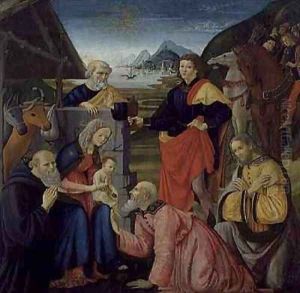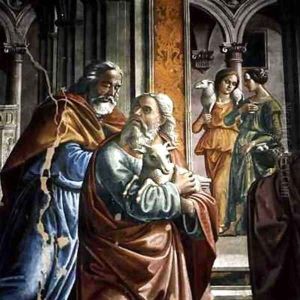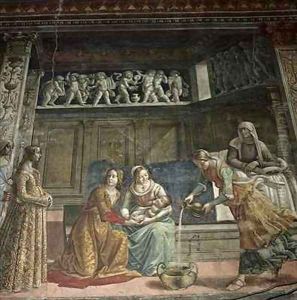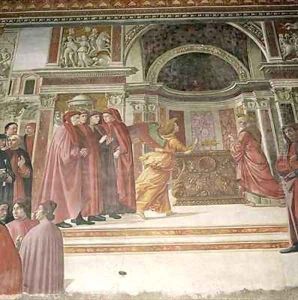Davide & Domenico Ghirlandaio Paintings
Domenico Ghirlandaio, born Domenico di Tommaso Curradi di Doffo Bigordi in 1448 or 1449 in Florence, Italy, was a prominent Renaissance painter, whose works are celebrated for their narrative detail and vibrant realism. Less is known about his brother Davide Ghirlandaio, who was also involved in the family's workshop, though his contributions are often overshadowed by Domenico's fame and achievements. The Ghirlandaio brothers were part of a large and successful workshop that included their younger brother Benedetto and later, Domenico's son Ridolfo Ghirlandaio, ensuring the family's artistic legacy continued through the generations.
Domenico was initially trained by his father, who was a goldsmith, and this early education in detailed craftsmanship influenced his meticulous approach to painting. He later apprenticed under Alesso Baldovinetti, absorbing the Florentine tradition of fresco painting that would become a hallmark of his career. Ghirlandaio's work was characterized by its detailed portrayal of contemporary life and settings, integrating portraits of his patrons and their families into religious scenes with remarkable realism and depth.
Ghirlandaio's most acclaimed works include a series of frescoes in the Sassetti Chapel of Santa Trinita and the Tornabuoni Chapel of Santa Maria Novella, both in Florence. These commissions showcase his ability to weave complex narratives, his skillful use of perspective, and his talent for capturing the textures and colors of fabrics and landscapes, reflecting the wealth and sophistication of Florentine society at the time. Additionally, Ghirlandaio was commissioned to paint a fresco in the Sistine Chapel, further cementing his reputation beyond Florence.
Domenico Ghirlandaio was not only a master painter but also a respected teacher. Among his pupils was Michelangelo Buonarroti, who briefly worked in his workshop, learning techniques that would later influence his own monumental works. Ghirlandaio's contribution to the Italian Renaissance extends beyond his paintings; his workshop served as a training ground for the next generation of artists, propagating the styles and techniques that defined the era.
Domenico Ghirlandaio died in 1494, leaving behind a body of work that continues to be studied and admired for its historical significance and artistic beauty. While Davide's contributions remain less documented, the Ghirlandaio workshop's legacy, under Domenico's leadership, has left an indelible mark on the history of art, illustrating the vibrancy of Florentine culture during the Renaissance.



